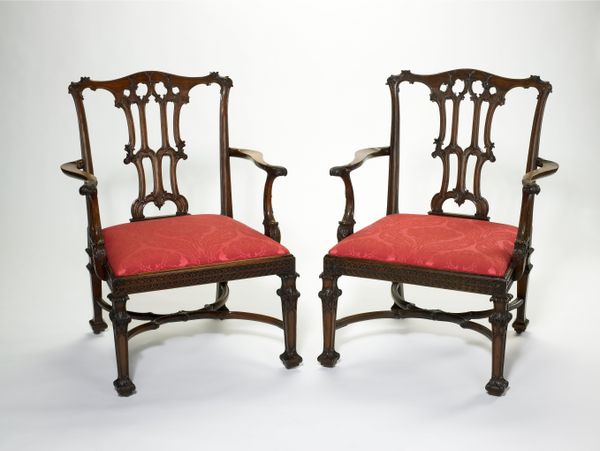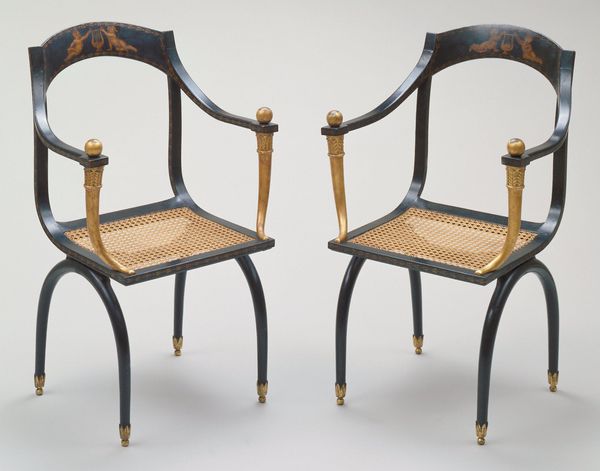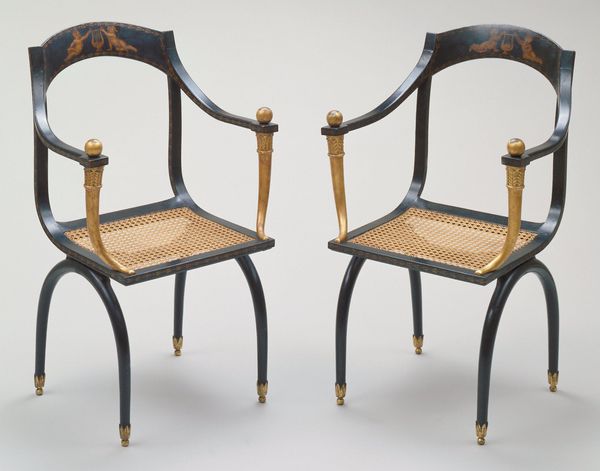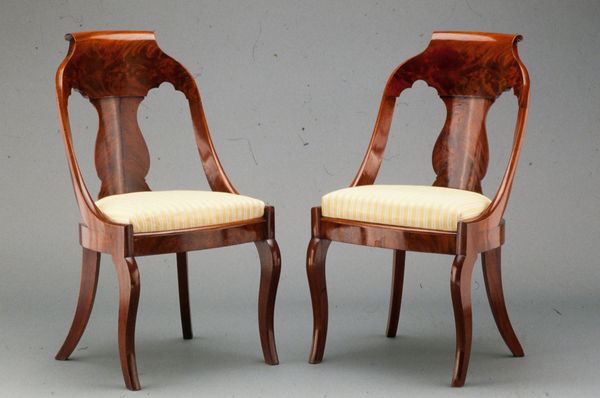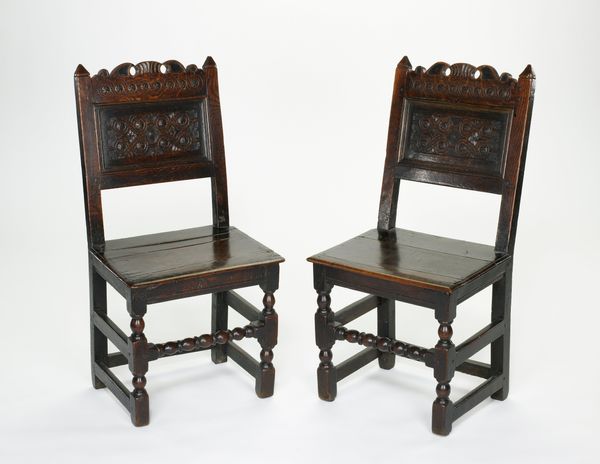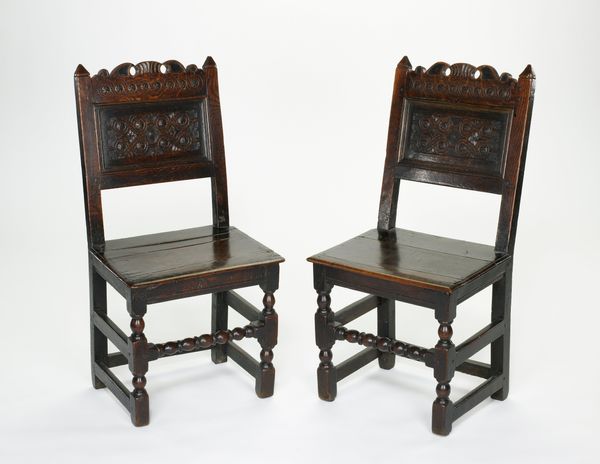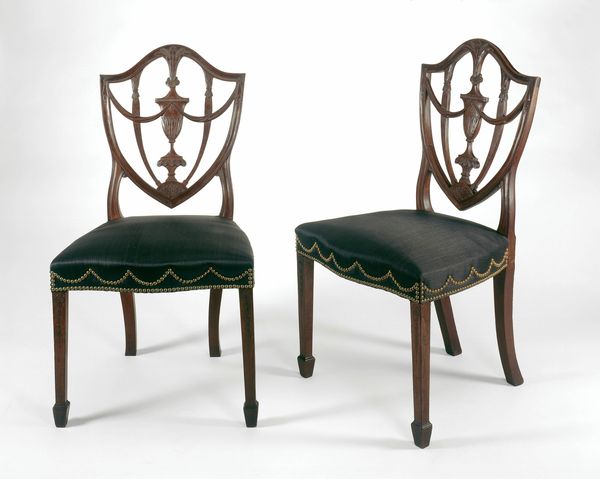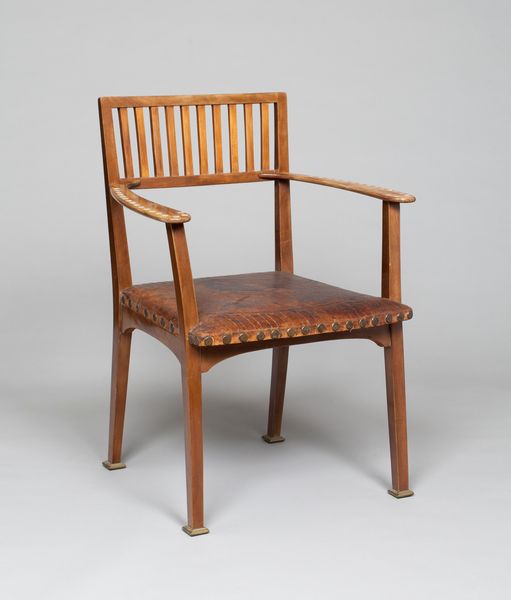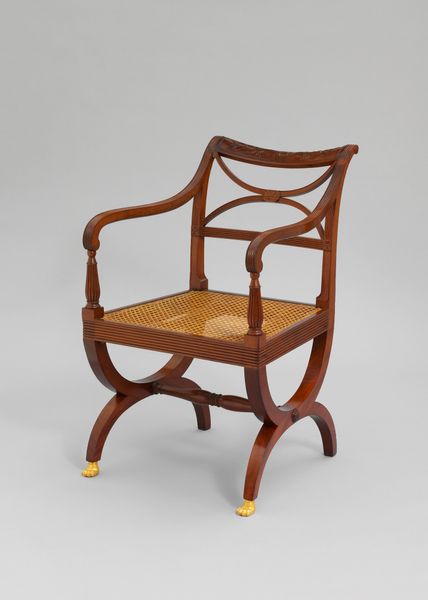
carving, wood
#
neoclacissism
#
carving
#
greek-and-roman-art
#
furniture
#
wood
#
metal and woodwork
Dimensions: 32 3/4 x 19 1/4 x 22 1/2 in. (83.19 x 48.9 x 57.15 cm)
Copyright: Public Domain
This Klismos side chair, of unknown date and authorship, is an object that transcends mere functionality, embodying complex social dynamics. The chair's design harkens back to ancient Greece, where such forms were associated with status and power. But what does it mean for an anonymous artist to recreate this form, particularly without the original cultural context? This act invites us to consider the appropriation and reinterpretation of historical symbols across time and cultures. The identity of those who would have sat on this chair is also important. The chair becomes a stage upon which the drama of social hierarchy plays out, revealing the unspoken rules of who is afforded comfort and status. It reflects societal aspirations, class distinctions, and the ways in which design can perpetuate or challenge existing power structures. Consider the narratives embedded within this seemingly simple object. The Klismos chair reflects the relationship between power, identity, and the subtle language of design.
Comments
minneapolisinstituteofart about 2 years ago
⋮
The design of these chairs, with a concave crest rail and legs made of Greek crosses, is a modification of the ancient Greek Klismos chair. Note their resemblance to the Greek chairs featured on the Minton plates (on the wall above), as illustrated by John Moyr Smith. In 1815 Rudolph Ackermann published a drawing of a similar dining or drawing room chair in his famous Repository of Arts. Indeed, these two chairs resemble those from a large set purchased for the Telfair House in Savannah, Georgia and now on view there at the Telfair Museum of Art.
Join the conversation
Join millions of artists and users on Artera today and experience the ultimate creative platform.

